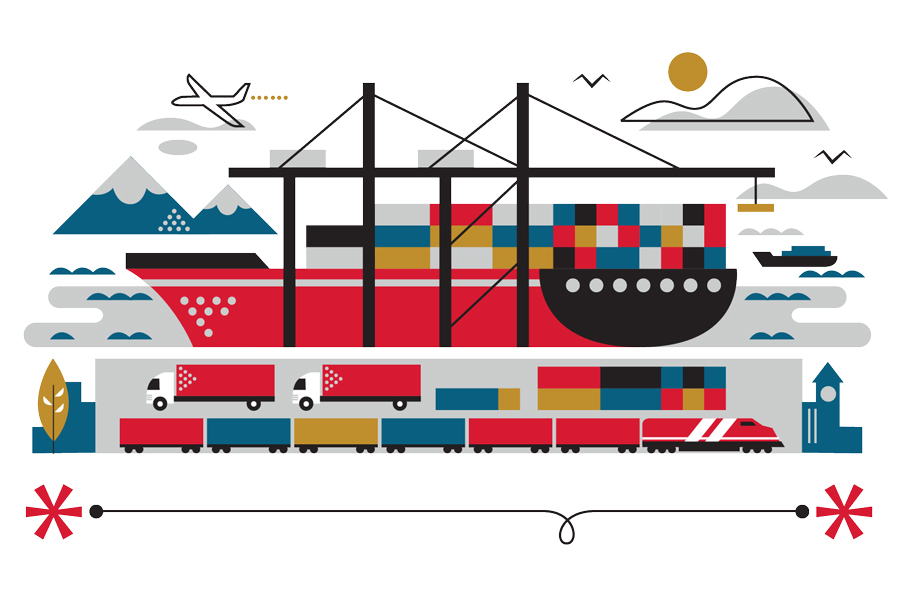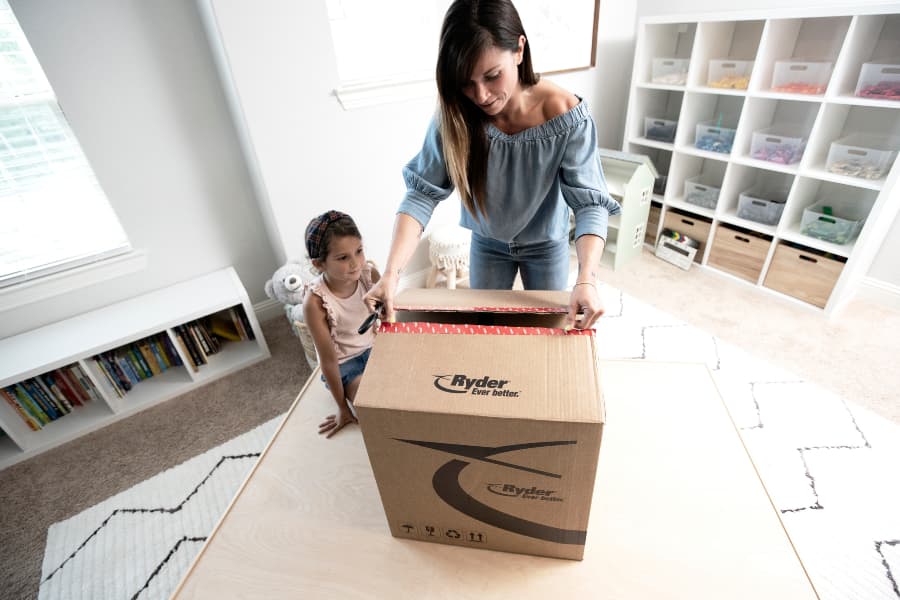[Updated post from October 5th, 2020]
Manufacturers create products, and retailers sell them to customers. Right? But there's a huge step in the retail supply chain that often gets missed: How products get from the manufacturer to the shop floor or online retail outlets.
While some brands may buy directly from manufacturers, the process of physically transporting products to the people who want to purchase them is costly and difficult to coordinate independently. For many businesses, finding the right goods to bring to market in the first place can be a challenge, especially for unique or specialty products.
This is where wholesale distributors enter the scene. A wholesale distributor plays a vital role in connecting manufacturers and retailers and facilitating the transfer of goods between distribution channels. To demystify this model, we'll explain how wholesale distribution works and why it's important to find a reliable wholesale fulfillment provider.
What is wholesale distribution?
The overall supply chain that carries sizable amounts of goods from the initial manufacturers to buying customers is usually made up of three types of businesses:
- The manufacturer
- The wholesale distributor
- The retailer
The manufacturer creates the items that customers want to buy, while the retailer is in charge of selling these items through direct contact with customers either in-store or online. But how do products make it to these retailers in the first place? This is where wholesale distributors come into the picture.
Wholesale distribution refers to the workflow of selling products in bulk quantities to retailers, commercial entities, or other wholesale businesses. In sum, wholesale distributors act as the middlemen between the manufacturers or suppliers and the retailer that the end customer who purchases the goods from.
Distributors make a profit by sourcing desirable products in large quantities and then reselling them to retailers or other businesses, establishing a relationship that leads to future orders for the same or different products. This means they have to be in touch with consumer demand and understand market trends to ensure they are providing popular products that retailers want to purchase.
What role do wholesale distributors play in the supply chain?
Manufacturers can produce products in bulk quickly and at a low cost but don't usually have the means to bring these goods to market independently. This makes wholesale distribution a necessary component of the supply chain to coordinate moving goods from A to B.
It's the responsibility of wholesale distributors to transport the goods they purchase directly from suppliers or product manufacturers to their retail customers. This in turn requires logistics workflows such as storage, inventory management, warehousing, and shipping to be executed with precision to ensure stable supply. Distributors may also handle more detailed tasks, such as kitting, repacking, and labeling to meet retailer routing requirements or ensure that products are in the final form that consumers see online or in-store.
To make this possible, larger wholesale distributors often require multiple warehouse facilities to store large quantities of inventory and lower the time and cost of transporting goods to the appropriate retail stores or distribution warehouse.
What is the difference between a distributor and a wholesaler?
The terms 'distributor' and 'wholesaler' are often used interchangeably, which creates confusion over what each party does within the supply chain.
A wholesaler is a specific type of distributor who focuses exclusively on working with retailers to sell them suitable merchandise. They make a profit by purchasing large quantities of goods to pay lower prices per unit, before selling them in smaller quantities to retail stores. The wholesaler is not responsible for promoting said merchandise, or tracking how much of the merchandise a retailer can sell successfully. A distributor, on the other hand, is a much broader term that encompasses a range of intermediaries within the supply chain. Distributors include brokers, agents, sales representatives, as well as wholesalers.
Types of wholesale distributors
General line distributors
General distributors source and sell products across multiple industries, such as home decor, apparel, toys, beauty, gifting, and more. They are highly convenient distributors for big-box stores or boutiques that don't want to buy products in bulk from different suppliers and prefer to source products from one place. However, they usually won't have the same level of industry knowledge and relationships as more specialized distributors.
Regional distributors
Regional distributors cater to wholesale distribution work within a certain geographical area. This gives them very in-depth knowledge of that local market segment and important market trends, consumer demand, and successful sales strategies. Retailers that work with regional distributors aren't just purchasing products, but getting valuable insights into their local customer base to increase sales.
Wholesale importers/distributors
Wholesale importers source products from overseas manufacturers or suppliers, especially for items that are difficult for retailers to find domestically owing to the limited availability of raw materials or manufacturing expertise. This means they play a crucial role in connecting businesses with individual manufacturers or suppliers for unique, ethnic, or specialized products.
Dropshippers
Dropshipping is a type of wholesale distribution. This is because the businesses selling products to the end customer don't store and hold the inventory themselves. Instead, they facilitate the sale and shipment directly from the manufacturer to the end customer. Dropshippers only handle order processing and communication with the customer, while order fulfillment and shipping are the responsibility of the supplier.
The wholesale distribution process
Put simply, wholesale distributors buy goods from the original manufacturer for a lower price than if they were individually bought by a retailer or consumer. Lower prices are possible because the amount of the product that manufacturers are selling makes up for their operating costs and allows them to turn a profit.
After moving the items from the manufacturer and storing the goods in their own warehouses and distribution centers, wholesale distributors will connect with retailers to sell those goods at a slightly higher price to gain a profit for themselves. When retailers place orders for products, the wholesale distributor will process the order and verify stock availability and prepare the order for shipment.
However, retailers receiving wholesale orders also need to have a streamlined system to process new inventory and ready it for either direct to consumer sales or transferring to retail stores for unpacking and putting on the shelf. If orders need to be prepared for further wholesale activity, this may mean that detailed routing requirements need to be met for shipping, labeling, and packaging to avoid costly chargebacks and delays to fulfillment.
The challenges of wholesale distribution
Manufacturers can sell directly to brands. Growing supply chain complexity means that some manufacturers are choosing to simplify inventory management by selling directly to retailers, removing wholesale distributors from the equation entirely.
Forecasting customer demand. Wholesale distributors are tasked with knowing what types of products are in demand by consumers at a given time, which is far from an exact science. Poor forecasting can result in distributors carrying either too much or little inventory to fulfill demand, which can damage relationships with both manufacturers and retailers.
Growing competition. As e-commerce goes global, wholesale distributors are facing growing pressure from overseas competitors who can undercut their pricing and quantities. Vast online marketplaces such as Ali Express and Temu cater to wholesale volumes as well as D2C sales, lowering the barriers to access for retailers who are looking for both generic and innovative products.
Seamless and responsive wholesale. Retailers and consumers alike increasingly expect goods to be transported between facilities quickly and seamlessly to avoid lost sales opportunities. Distributors need to be fast and responsive to the needs of their retail partners, whether that's real-time inventory allocation, rapid shipping, or customer care.
Choose a scalable wholesale fulfillment solution
As wholesale distribution and fulfillment grow more complex, it's never been more important to find a supportive partner to effectively coordinate distribution channels and service your retail partnerships. Ryder is a leading wholesale fulfillment provider that provides end-to-end logistics solutions nationwide. From dedicated facilities with advanced automation to efficient multi-client spaces, we design, implement, and operate a wholesale strategy that fits your precise business needs and growth objectives.




